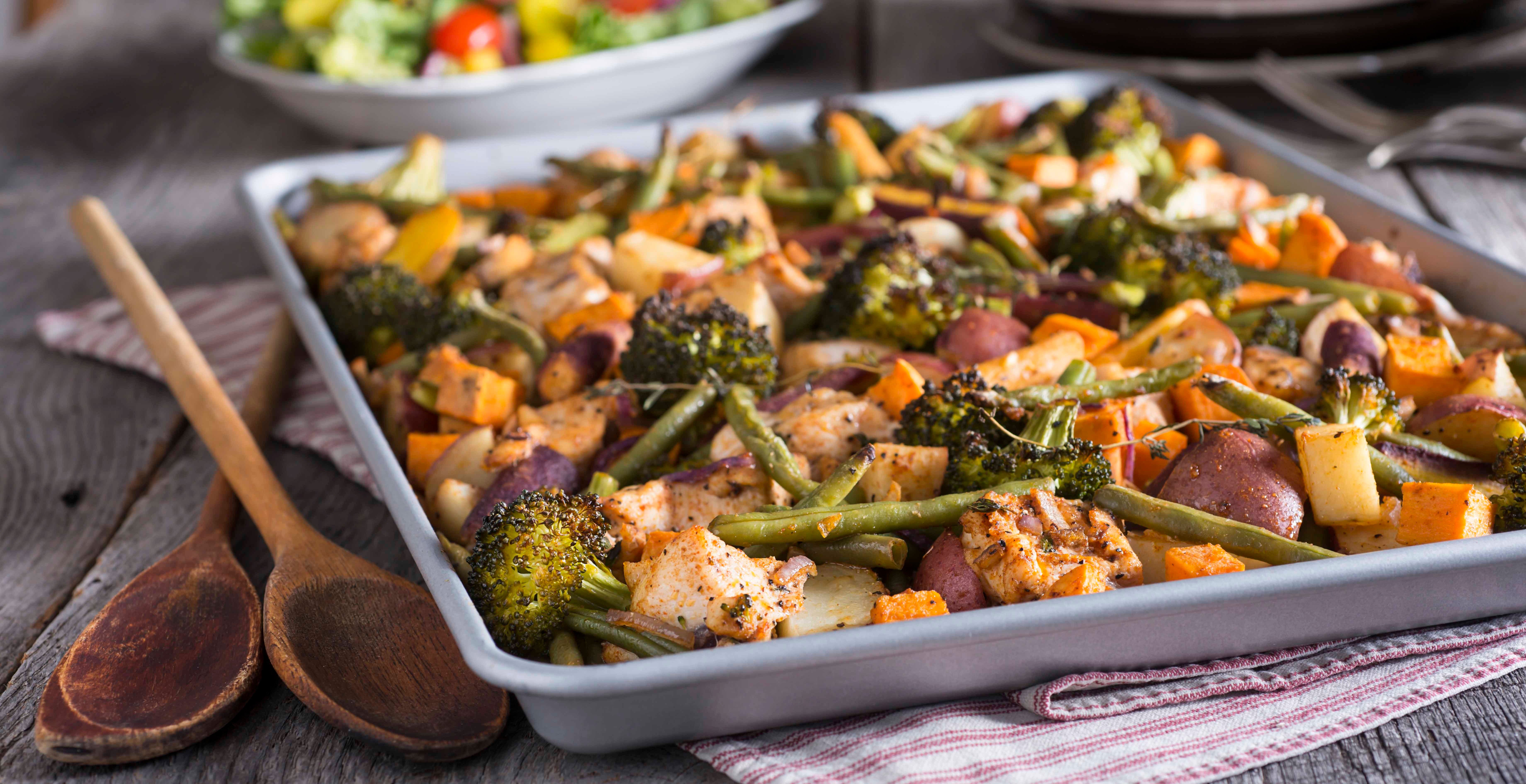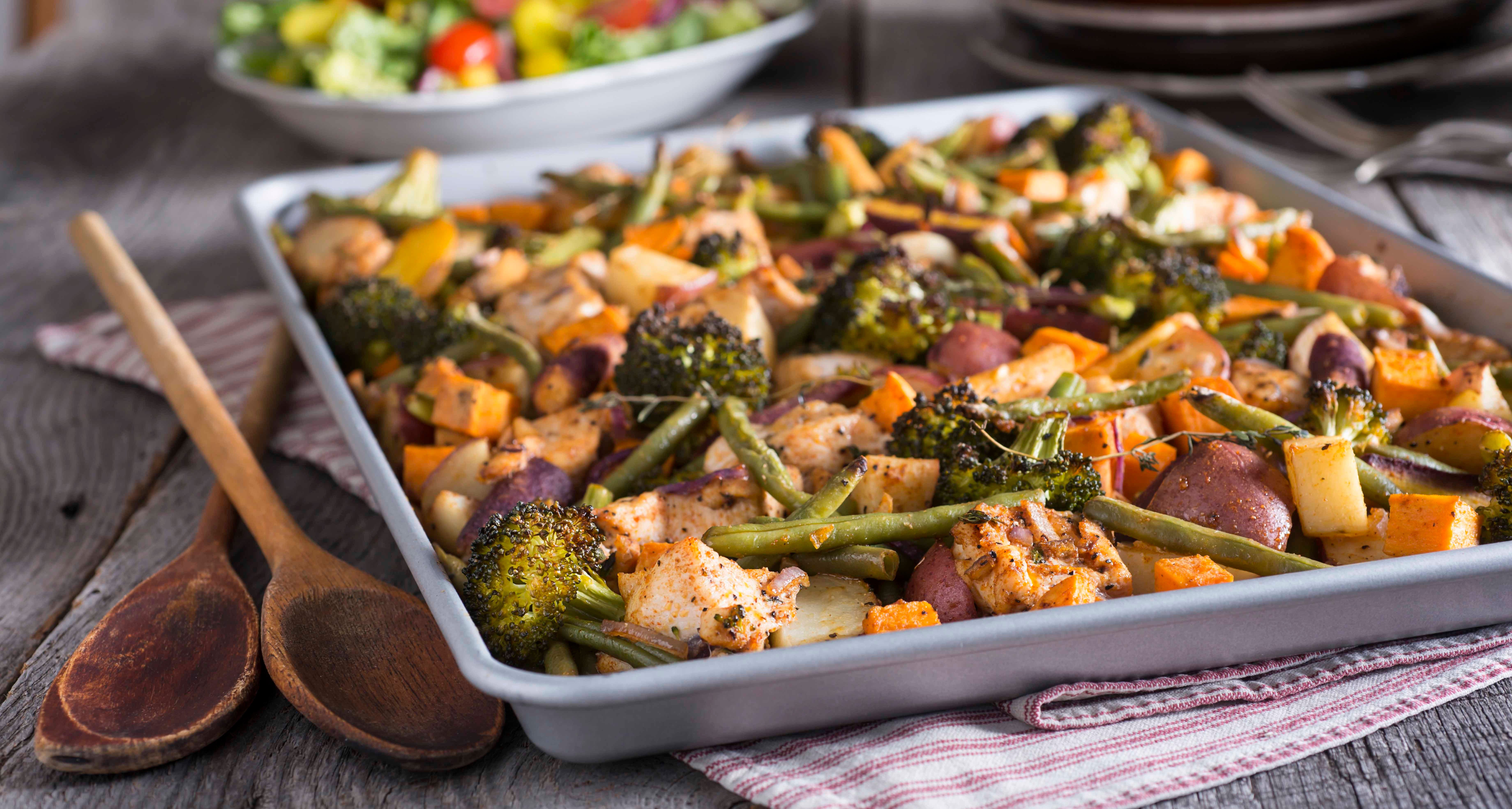How To Make Cooking Easier


Let’s face it, cooking can be an intimidating prospect whether you’re a family of four (or more!) or you’re just cooking for yourself. Luckily, there are plenty of ways to make it a less daunting task. The number one rule for reducing your time in the kitchen? Enlist the help of family members whenever possible, whether that means cleaning up, prepping ingredients or simply setting the table.
Batch cooking
Batch cooking is one of the most efficient ways to save time in the kitchen. All it requires is a little planning, some fridge or freezer space, and a couple of hours of your time. Chili, soups, stews, and even steel-cut oats can be portioned out in individual containers and frozen for future use (defrost in the microwave or in the fridge overnight). Raw chicken, pork, and beef can be submerged in a marinade and frozen in resealable bags with fork-tender results (avoid this method with fish, its flesh is too delicate for long marinade times and can begin to deteriorate over time). Mason jar salads have become social media stars over the last couple of years and are one of the best methods for making multiple salads at once. Make sure to layer the sturdiest ingredients on the bottom, chickpeas and other legumes, onion, shredded chicken breast and tuna are all able to withstand salad dressing without problem.
Sheet pan meals
Versatile, easily modified, and with very little cleanup required, sheet pan meals are a perfect solution for busy weeknights. Use a non-stick rimmed baking sheet (or even better, a parchment-lined baking sheet for easy clean up), add your preferred protein and fill the rest of the space with fresh veggies. Try baking chicken breasts, pepper strips, and sliced onions that have been seasoned with cumin and chili powder for a super simple fajita filling. Salmon fillets, tiny new potatoes (or diced regular potatoes) and broccoli florets can all be roasted on the same baking sheet, give them a good spritz of fresh lemon juice before serving for an elegant meal in less than half an hour. Sheet pan meals are also a great way to do some batch cooking for the next couple of days. Add some extra protein and veggies and portion out into containers when cooked, store in the fridge and reserve for lunches throughout the week.
Prep grains for emergencies
Cook all your favourite grains in large batches and freeze for future use. Quinoa, white and brown rice, farro, bulgur, and oats can be made at the beginning of the week (or whenever you run out) and then transferred to reusable containers or resealable bags. Freezing is preferable to refrigeration as many grains have a fairly short shelf-life once cooked, making them particularly susceptible to bacterial growth and other food-borne illnesses. Allow the cooked grains to come to room temperature before freezing and make sure to date and label the contents of the container or bag (you might think you’ll remember you made that quinoa in April but personal experience says otherwise). If you’re feeling particularly organized, cooked pasta can also be frozen (the same rules apply for labeling and dating). To reheat frozen pasta add it to a pot of boiling water for 30 seconds, drain and serve as usual.
Don’t be afraid to go partially store-bought
While it’s tempting to think you’ll always be able to do it all in the kitchen, the truth is everyone needs a helping hand once in a while. Store-bought convenience items such as pre-cut fruits and vegetables, cheater garlic, canned refried beans, jarred salsa, sliced or shredded cheese, frozen pizza dough, jarred pasta sauce, frozen fruits and veggies, parboiled rice, and any other convenience item that might make your life easier can sometimes be the difference between a home-cooked meal and ordering a pizza. If you’re a fan of cooking, keeping a well-stocked pantry, fridge and freezer is one of the best ways to ensure home-cooked meals are a regular occurrence at your house.
